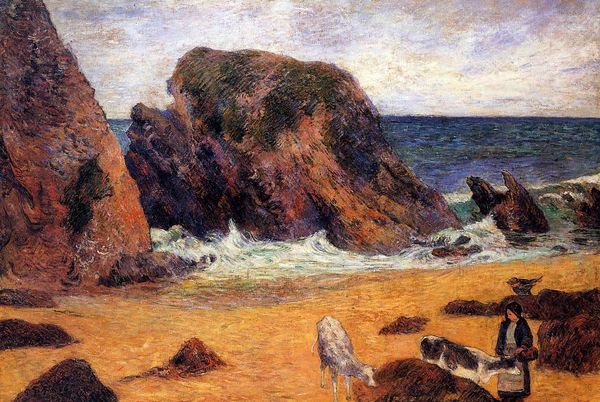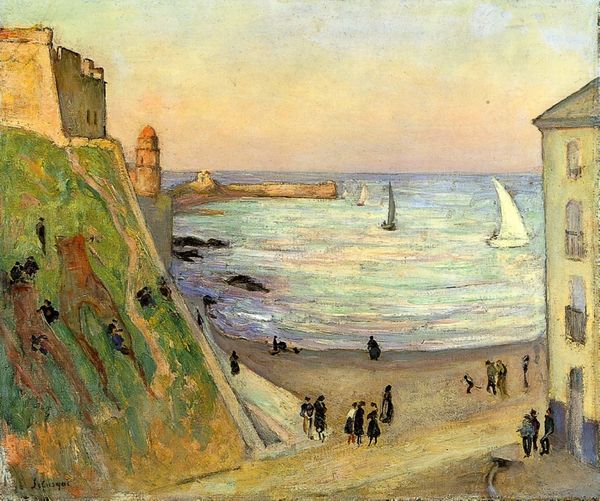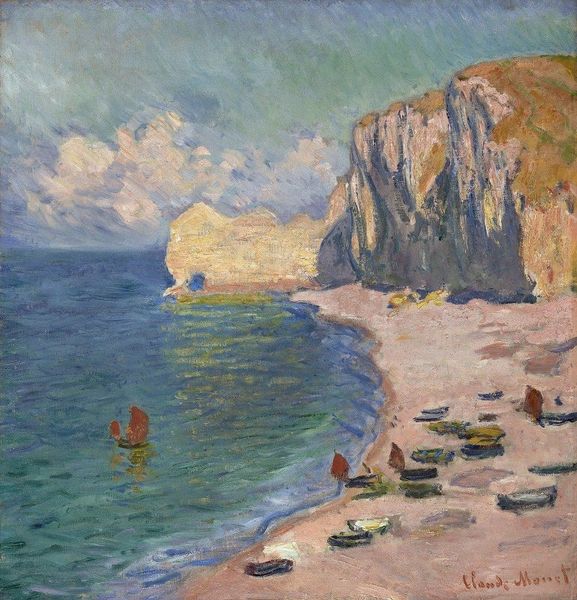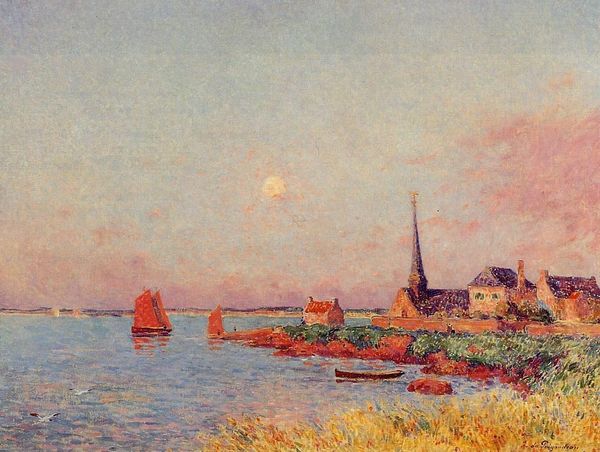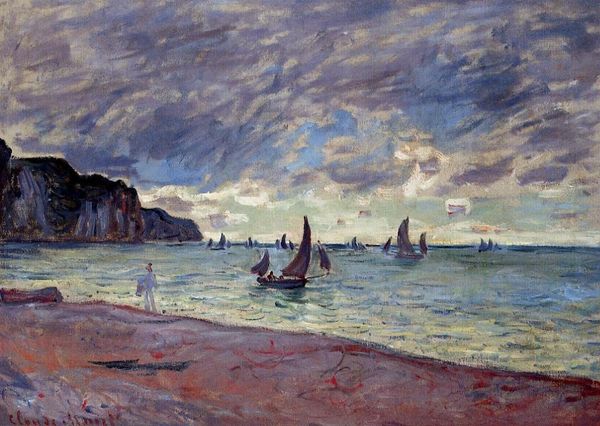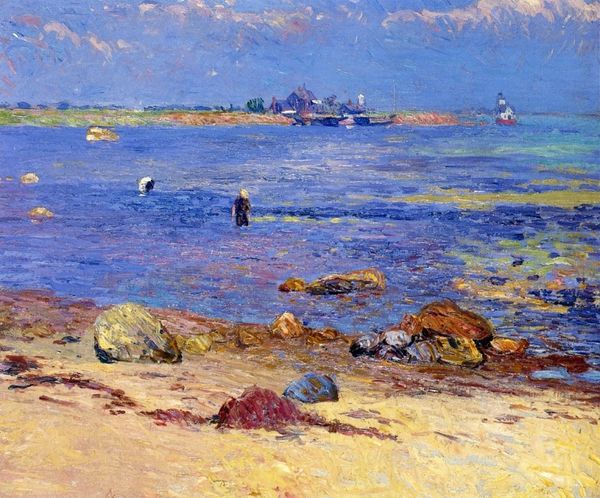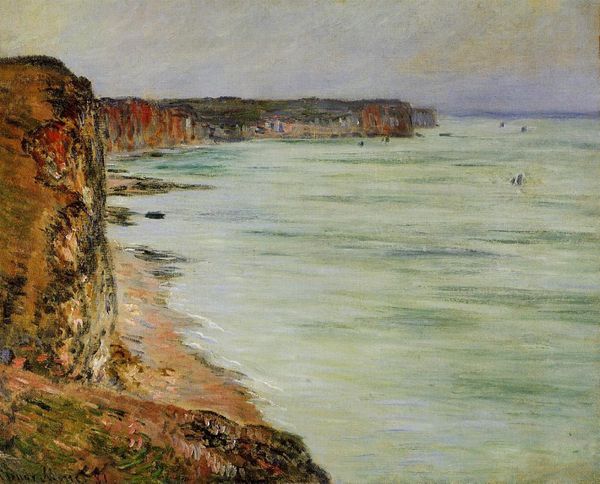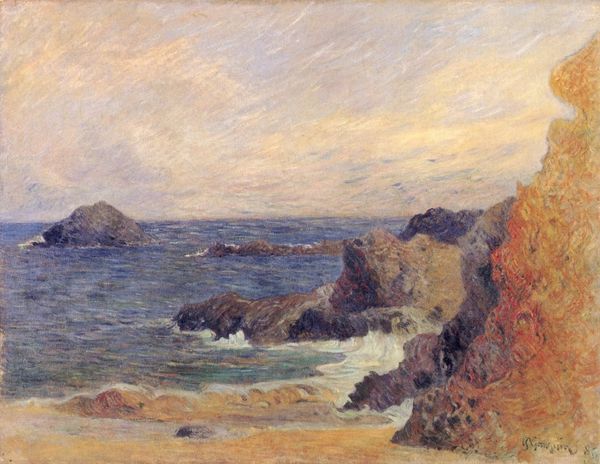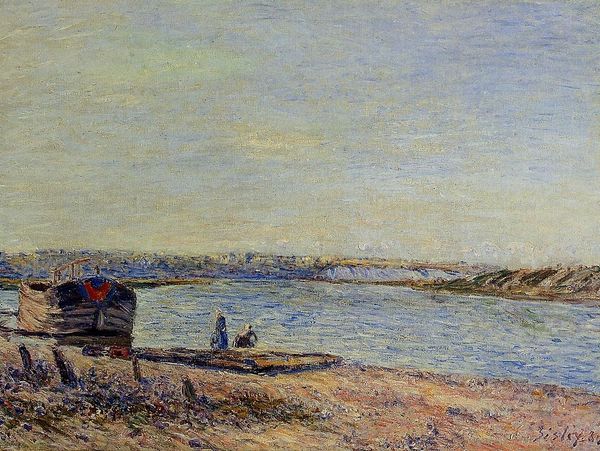
plein-air, oil-paint
#
portrait
#
boat
#
ship
#
impressionism
#
plein-air
#
oil-paint
#
landscape
#
impressionist landscape
#
figuration
#
oil painting
#
rock
#
seascape
Dimensions: 73 x 73 cm
Copyright: Public domain
Editor: Here we have Paul Gauguin’s “Bathing, Dieppe” from 1885, an oil painting done en plein-air. It's a lovely beach scene, full of tiny brushstrokes giving a shimmering, almost hazy feel. What catches your eye in this piece? Curator: I'm immediately drawn to the materiality of it. Think about the context: Gauguin, a middle-class stockbroker, engaging in this plein-air practice alongside avant-garde artists. The physicality of lugging those paints, canvas, easel...it all speaks to a performative embrace of a more "authentic" lifestyle. How does the choice of painting a leisure scene reflect on the emerging bourgeoisie? Editor: That's interesting. I hadn't considered the social aspect of the *making* of the painting. What do you mean by “authentic”? Curator: Consider the shift in artistic labor. Before, artists were commissioned, creating works for specific patrons and purposes. Here, Gauguin is actively choosing his subject and mode of production – signaling autonomy. The 'authentic' here signifies a connection to nature and a supposed break from industrial society, ironically achieved through readily available, mass-produced paints and canvas. Isn’t it fascinating how even attempts at rebellion are deeply intertwined with the systems they seek to escape? Editor: So, the act of painting outdoors itself becomes a statement. Do the people bathing factor into this interpretation? Curator: Absolutely! Look at them, positioned between the leisure of the beach and the industry of the ships. They're consumers of this new leisure time made possible by industrial capitalism. Their presence is as much a product of its time as the painting itself. Editor: I see what you mean. The scene is beautiful, but when you look at how and why it was made, it reveals a much more complex relationship between art, labor, and society. Curator: Exactly. The appeal of Impressionism lies not just in the aesthetic, but in understanding its relationship with material culture and its broader socioeconomic context.
Comments
No comments
Be the first to comment and join the conversation on the ultimate creative platform.


